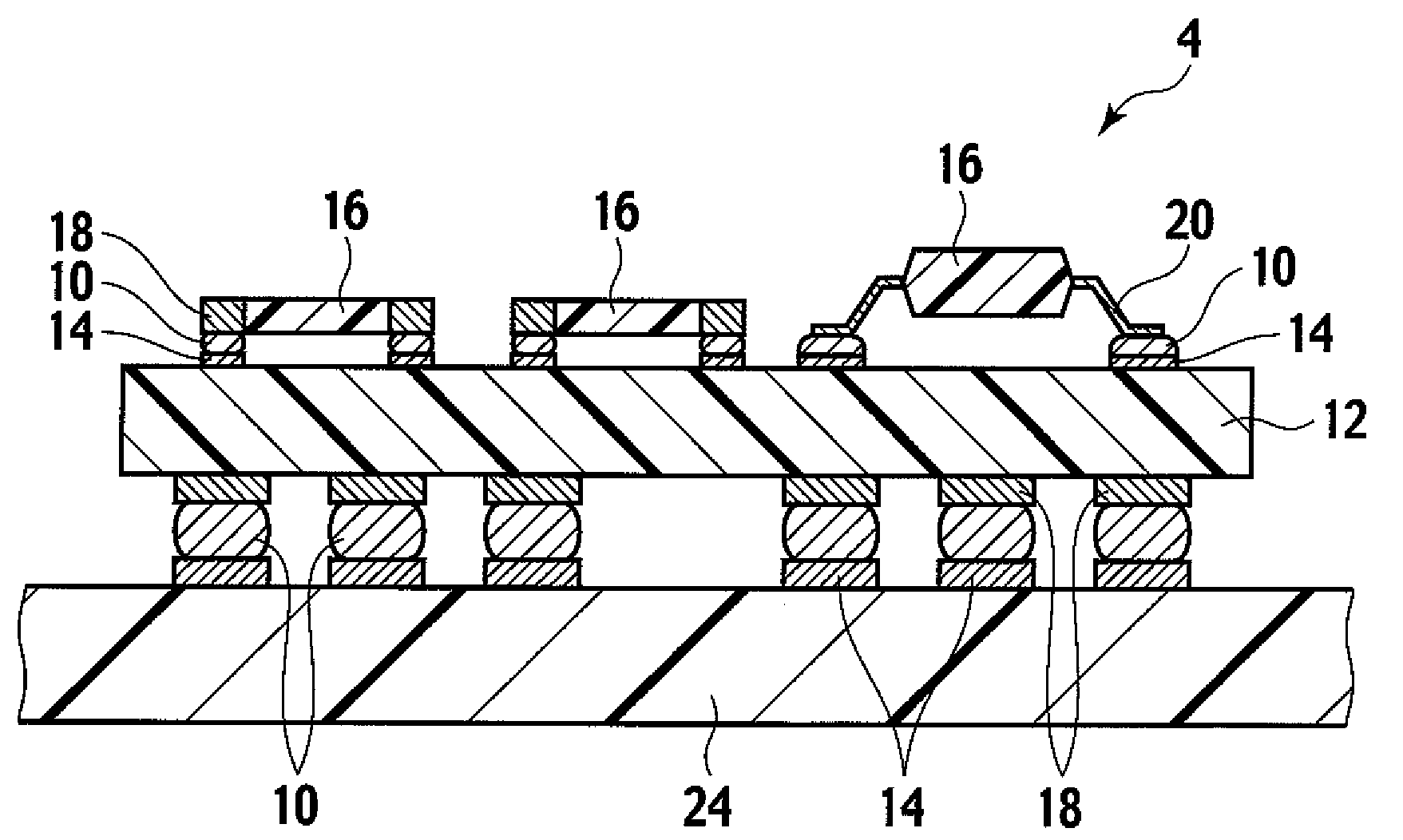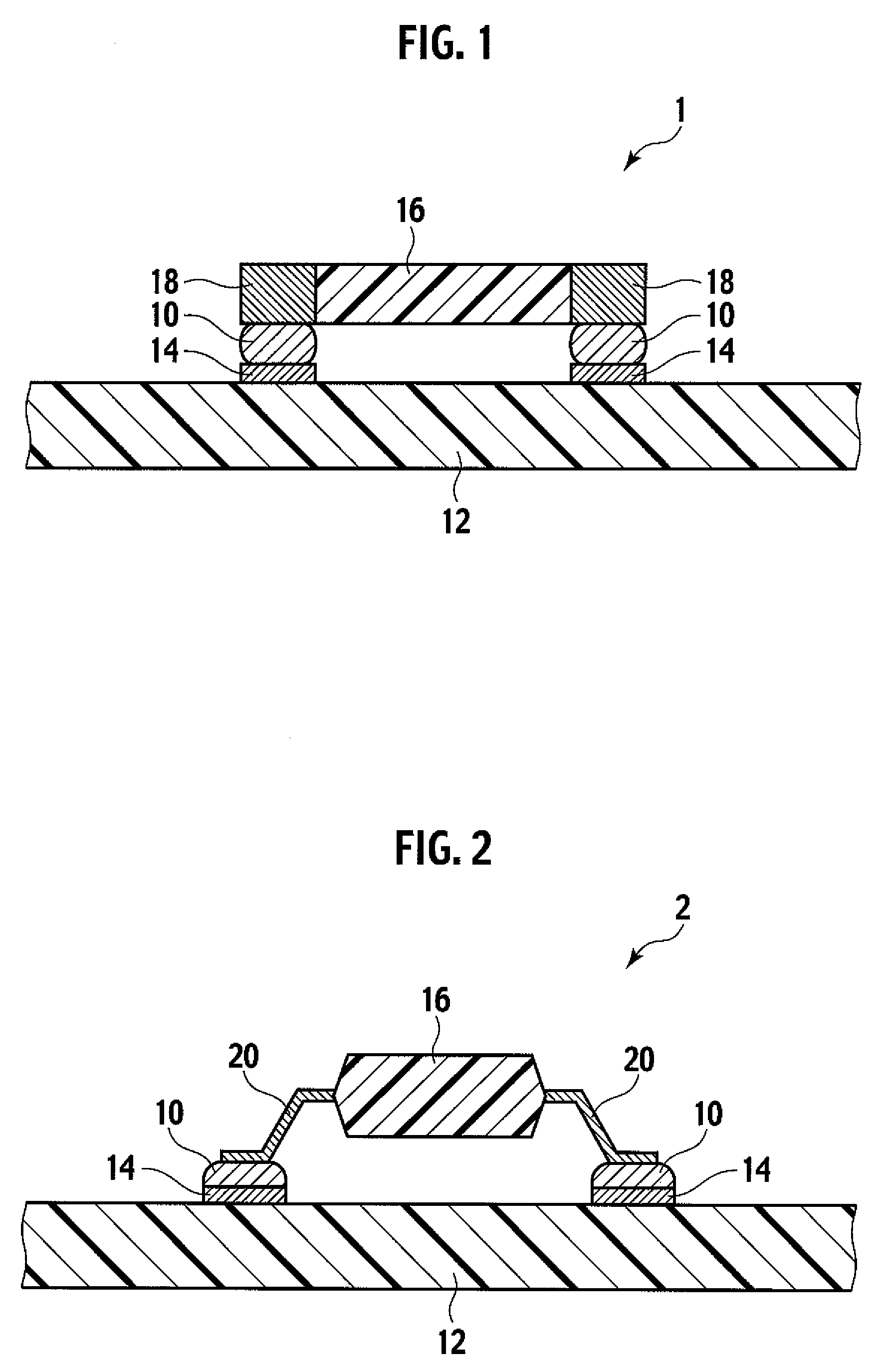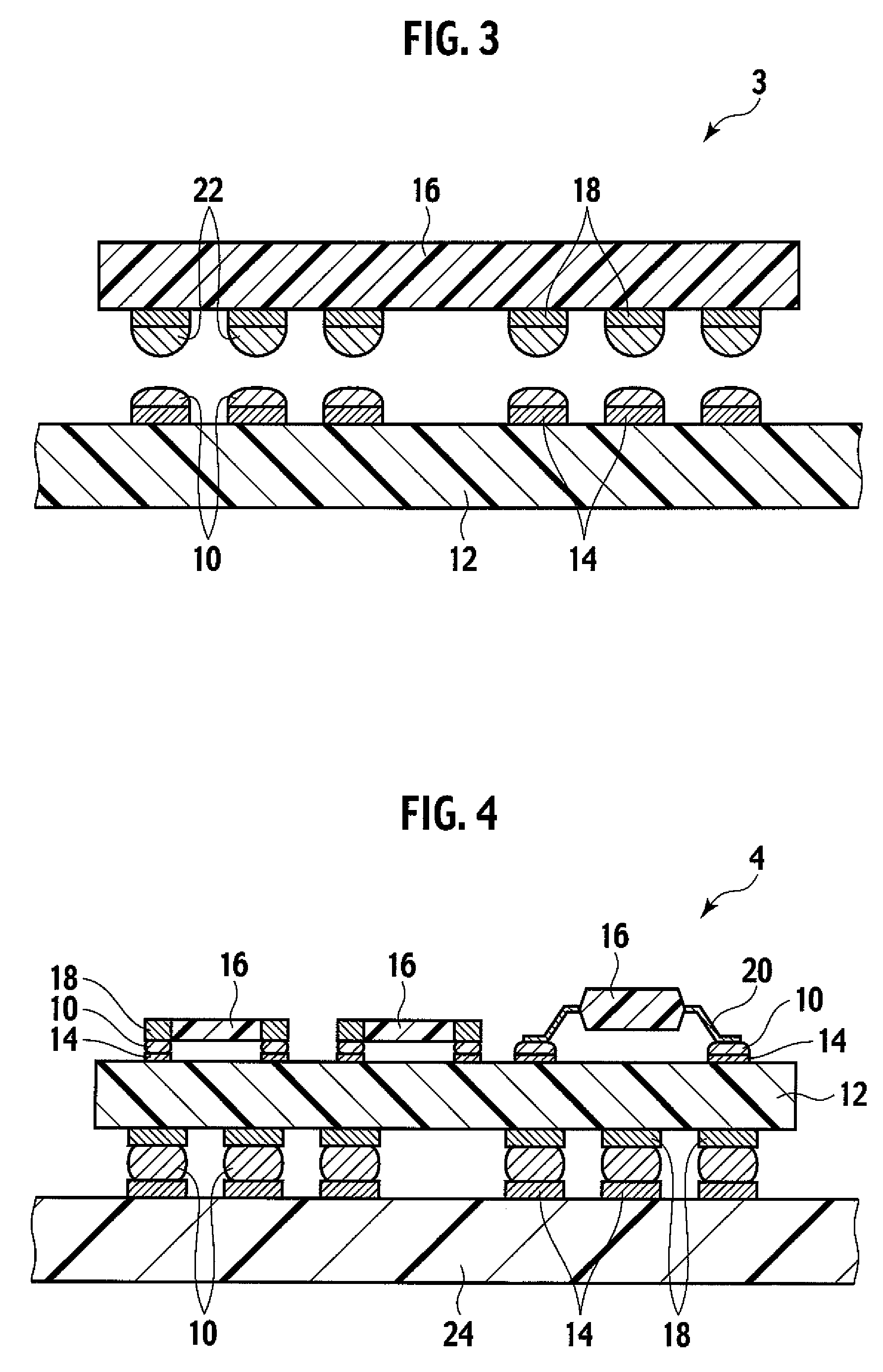Adhesive composition, electronic-component-mounted substrate and semiconductor device using the adhesive composition
a technology of adhesive composition and electronic components, applied in the direction of solid-state devices, printed circuit assembling, non-conductive materials with dispersed conductive materials, etc., can solve the problems of falling in the adhesive force, brittle solder, and inability to use some electric components high in thermal sensitivity, etc., to achieve excellent adhesive properties, electroconductivity, and stability.
- Summary
- Abstract
- Description
- Claims
- Application Information
AI Technical Summary
Benefits of technology
Problems solved by technology
Method used
Image
Examples
example 1
[0094]The following were mixed: 14.8 parts by weight of YDF-170 (trade name, a bisphenol F type epoxy resin manufactured by Tohto Kasei Co., Ltd., epoxy equivalent=170), 1.5 parts by weight of 2PZ-CNS (trade name, an imidazole compound manufactured by Shikoku Chemicals Corp.), and 3.7 parts by weight of BHPA (2,2-bishydroxymethylpropionic acid manufactured by Alfa Aesar). The mixture was caused to pass into a three-roll machine three times to prepare a binder component.
[0095]Next, to 20 parts by weight of the binder component yielded as described above were added 40 parts by weight of metallic Sn42-Bi58 solder particles (average particle diameter: 20 μm, and melting point: 138° C.), and 40 parts by weight of a metal MA05K (trade name, silver-coated copper powder manufactured by Hitachi Chemical Co., Ltd.), and these components were mixed with each other. A vacuum crusher was used to knead the components under the atmospheric pressure for 10 minutes, and then the components were knea...
examples 2 to 7
, and Reference Examples 1 to 7
[0096]Each adhesive composition was yielded in the same way as in Example 1 except that each composition shown in Table 1 to 2 was used.
[0097]Details of materials shown in Tables 1 to 2 are as described below. The unit of the blend amount of each material in Tables 1 to 2 is part(s) by weight.
[0098]BHBA: 2,2-bishydroxymethylbutanoic acid
[0099]BHVA: 2,2-bishydroxymethylpentanoic acid
[0100]Metallic Sn96.5-Ag3-Cu0.5 solder: average particle diameter=20 μm, and melting point=217° C.
(Evaluations of Adhesive Force, Volume Resistance, TCT Resistance, and High-Temperature Standing Resistance)
[0101]Properties of the adhesive composition according to each of Examples 1 to 7 and Reference Examples 1 to 7 were measured by methods described below. The results are together shown in Tables 1 to 2.
[0102](1) Adhesive force: About 0.5 mg of each of the adhesive compositions was painted onto a Ag-plated Cu plate, and a Sn-plated Cu plate, 2 mm×2 mm×0.15 mm, was mounted t...
PUM
| Property | Measurement | Unit |
|---|---|---|
| temperature | aaaaa | aaaaa |
| melting point | aaaaa | aaaaa |
| diameter | aaaaa | aaaaa |
Abstract
Description
Claims
Application Information
 Login to View More
Login to View More - R&D
- Intellectual Property
- Life Sciences
- Materials
- Tech Scout
- Unparalleled Data Quality
- Higher Quality Content
- 60% Fewer Hallucinations
Browse by: Latest US Patents, China's latest patents, Technical Efficacy Thesaurus, Application Domain, Technology Topic, Popular Technical Reports.
© 2025 PatSnap. All rights reserved.Legal|Privacy policy|Modern Slavery Act Transparency Statement|Sitemap|About US| Contact US: help@patsnap.com



